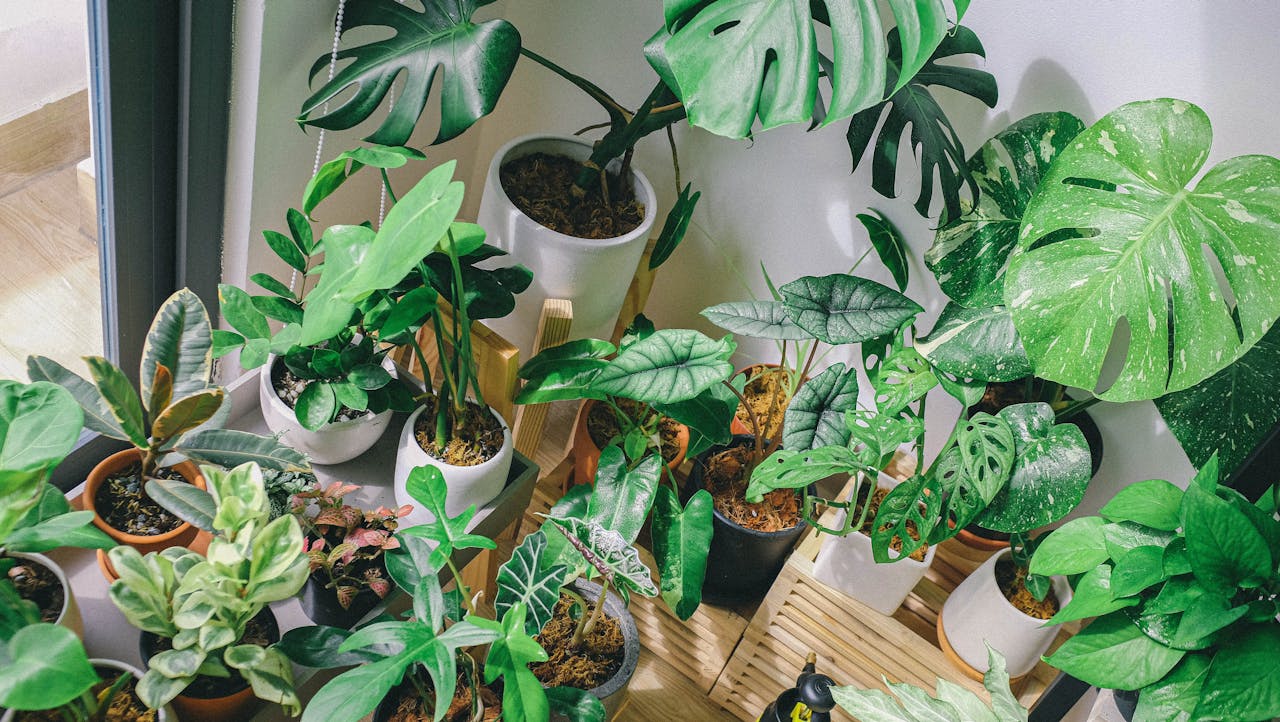Watering your houseplants correctly is essential for their health and growth. Too much or too little water can cause serious problems, including root rot, yellowing leaves, and stunted growth. This guide will help you understand how to water your houseplants properly, ensuring they thrive and beautify your home.
Understanding Water Needs

Different plants have varying water requirements based on their species, size, and the environment they are in. Here are some key factors to consider:
- Plant Type: Succulents and cacti need less water, while tropical plants like ferns and peace lilies require more frequent watering.
- Pot Size and Type: Larger pots hold more soil and water, needing less frequent watering. Pots with drainage holes are crucial to prevent waterlogging.
- Soil Type: Well-draining soil prevents root rot. For example, a cactus mix for succulents and a peat-based mix for ferns.
- Environment: Humidity, temperature, and light levels affect how quickly soil dries out. Adjust your watering schedule accordingly.
General Watering Guidelines
1. Check the Soil Moisture
Always check the soil moisture before watering. Stick your finger about an inch into the soil. If it feels dry, it’s time to water.
- Tip: Use a moisture meter for a more accurate reading.
2. Watering Frequency
Here are some general guidelines for different types of houseplants:
Succulents and Cacti
- Watering Frequency: Every 2-3 weeks
- Light Needs: Bright direct light
- Plants Examples: Aloe Vera, Echeveria, Jade Plant
Tropical Plants
- Watering Frequency: Once a week
- Light Needs: Bright indirect light
- Plants Examples: Peace Lily, Philodendron, Spider Plant
Low Water Plants
- Watering Frequency: Every 2-3 weeks
- Light Needs: Low to bright indirect light
- Plants Examples: ZZ Plant, Snake Plant
Best Practices for Watering Houseplants
1. Water Thoroughly
Water the plant until water flows out of the drainage holes. This ensures the entire root system gets hydrated.
- Tip: Empty the saucer under the pot after watering to prevent the roots from sitting in water.
2. Water at the Right Time
Water your plants in the morning. This allows them to absorb moisture throughout the day and prevents water from sitting on the leaves overnight, which can cause mold or mildew.
3. Avoid Overwatering
Overwatering is one of the most common mistakes. Ensure the soil has dried out before the next watering session.
- Sign of Overwatering: Yellowing leaves, mushy stems, and moldy soil.
4. Use the Right Water
Tap water is usually fine for most houseplants, but if your water is heavily chlorinated or softened, consider using filtered or rainwater.
- Tip: Let tap water sit out overnight to allow chlorine to evaporate.
Also Read- Best Plants For Your Windowsill: The Ultimate Guide
Specific Watering Needs for Popular Houseplants
1. Snake Plant (Sansevieria trifasciata)

- Watering: Water every 2-3 weeks, allowing the soil to dry out completely.
- Light: Low to bright indirect light
- Care Tips: Extremely drought-tolerant and thrives on neglect.
2. ZZ Plant (Zamioculcas zamiifolia)

- Watering: Water every 2-3 weeks, allowing the soil to dry out between waterings.
- Light: Low to bright indirect light
- Care Tips: Very hardy and can survive in low light and drought conditions.
3. Peace Lily (Spathiphyllum)

- Watering: Water weekly, keeping the soil consistently moist.
- Light: Low to moderate indirect light
- Care Tips: Prefers higher humidity and needs regular watering.
4. Spider Plant (Chlorophytum comosum)

- Watering: Water every 1-2 weeks, keeping the soil lightly moist.
- Light: Bright indirect light
- Care Tips: Produces offshoots that can be propagated easily.
Tips for Different Seasons
- Spring and Summer: Plants generally need more water during their growing season.
- Fall and Winter: Reduce watering as growth slows down.
Also Read- Indoor Plant Root Rot: How To Prevent, Spot, Treat, And Fix It
Conclusion
Watering your indoor plants correctly is crucial for their health and growth. By understanding the specific needs of each plant and following the general guidelines, you can ensure your indoor garden thrives. Remember to adjust your watering schedule based on the season and the environment in your home. Happy gardening!













Leave a comment
This site is protected by hCaptcha and the hCaptcha Privacy Policy and Terms of Service apply.